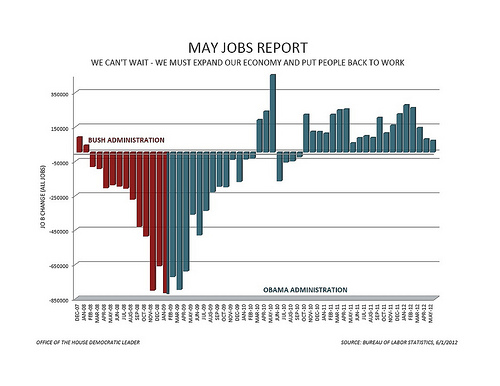


The U.S. economy could not sustain the optimistic trend from last month’s job report, when the unemployment rate for people with disabilities dropped by nearly 3%. As Michelle Diament of Disability Scoop reported last Friday, 12.9% of Americans with disabilities were without jobs in the month of May, according the U.S. Bureau of Labor Statistics; up from 12.5% the previous month.
Even though the overall employment picture showed 69,000 jobs added, marking 32 consecutive months of job growth, it was hard to find optimism in any corner. As Tami Luhby reported for CNNMoney, twice as many jobs would have to have been added in order to maintain the current 8.1% unemployment rate.
When optimism is on the decline, urgency and aggression typically come to the forefront. Jane White’s recent column in The Huffington Post, “We Can’t Tackle the Jobs Crisis Without Addressing Outsourcing, Automation” is an example of both. The advocate for retirees and author of America, Welcome to the Poorhouse spread the blame across both political parties, the Chinese, and even non-humans, writing:
As a result of automation, the U.S. produces almost one quarter more goods and services today than it did 13 years ago with almost the same number of workers. It’s ‘as if $2.5 trillion worth of stuff — the equivalent of the entire U.S. economy in 1958’ — has vanished.
Meanwhile, the Institute for Supply Management issued a more pragmatic response. Its June 1 press release includes quotes from several sectors of the manufacturing industry where “slow but steady” was the main theme for not just employment, but other indicators such as customer orders, production, and supplier deliveries.
But patience has never been a virtue of American business. The digital technology boom spurred the economy of the 1990s, and experts keep searching for a similar elixir in the second decade of the 21st century. International Business Times reporter Moran Zhang thinks the U.S. caught a “lucky break” with the discovery of shale gas reserves beneath the ground in many parts of the country.
The June 2 article, “US Manufacturing Jobs Begin The Long March Back From China (And Elsewhere),” has market analysts and CEOs bubbling with anticipation over the potential impact it could have. One expert predicts one million new manufacturing jobs in this industry alone by 2025. Moran couples this figure with estimates from reshoring operations back in America to paint a very rosy picture for the future of U.S. manufacturing:
In about five years, U.S. exports could increase by at least $65 billion annually, according to a Boston Consulting Group, or BCG, report. The impact on employment cannot be overstated. BCG predicts the new manufacturing jobs in the U.S. will create 1.8 million to 2.8 million additional jobs in the rest of the economy in industries such as construction, food services, housing. retail, and transportation.
A manufacturing renaissance of this magnitude would provide a surge in employment opportunities for people with disabilities who are part of organizations like ATI here in Massachusetts or Individual Support Systems in Kansas. That organization was the subject of a recent story by Jan Biles of The Topeka Capital-Journal, for the contract services jobs performed by individuals with disabilities, including assembling information packets, paper shredding, and order fulfillment. But as the organization’s vice president, Kathy Stiffler, tells Biles, “we have to have work.”
Comments?
Image by Office of House Democratic Leader Nancy Pelosi, used under its Creative Commons license.
nice
best
I HOPE IT WORKS
DOES THIS WORK
good